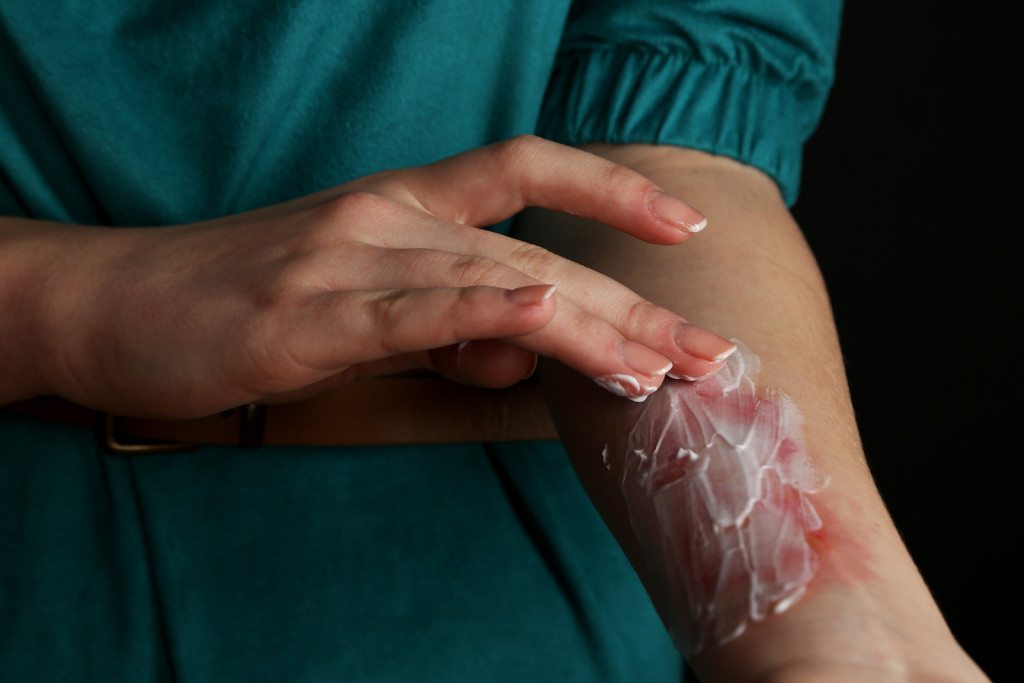Burns are among the most agonizing injuries any person can ever have to suffer through. The healing process, which often involves risky and expensive skin graft surgery, can be even more excruciating than the initial injury. Additionally, because burns can cause substantial scarring and disfigurement, victims often become depressed and withdraw from their romantic relationships and social activities. This is particularly true of children and teenagers, who may be bullied or excluded at school, leading to poor grades, anxiety, and low self-esteem.
If you or your child suffered a burn injury in the Philadelphia area due to another person’s careless actions, your family may be able to get compensated for the resulting medical bills, losses of income, pain and suffering, and other complications caused by the injury. Call Pennsylvania burn injury attorney Brent Wieand at (215) 666-7777 to arrange for a free and confidential legal consultation.

How Are Burns Classified by Type and Degree? What is the Treatment and Prognosis?
Burns are classified in two ways:
- By their type or cause.
- By their severity.
The severity of a burn is expressed in degrees. The higher the number, the worse the injury.
- First Degree – First degree burns are also called “superficial burns” because they only affect the outermost layer of skin (epidermis). First degree burns usually heal in a matter of days with minimal treatment, such as application of aloe vera or other over-the-counter creams and gels. However, if the burn becomes infected, the patient may require antibiotics or other, more intensive care plans.
- Second Degree – The layer of skin beneath the epidermis is called the dermis. Second degree burns destroy the entire epidermis, but may or may not fully penetrate through all of the dermis layers beneath.
-
- Partial Thickness – Only the uppermost layers of the dermis are damaged. The injury will appear slick with a pink or red coloration. These injuries usually heal in two to three weeks without skin grafting. Light scarring is possible.
-
- Full Thickness – The entire dermis is damaged. The injury will appear dry with a white or red coloration. The area may feel numb. Skin grafting will probably be necessary.
- Third Degree – Damage penetrates through the epidermis and dermis all the way down to the underlying subcutaneous tissue, which is made of fat and connective tissue. The injury will look black and/or white and may have a wrinkled, dried, or leather-like texture. Nerves in the injured area are destroyed, which means the center of the burn will be painless. However, the fringes around the burn, where nerves may still be intact, can feel extremely painful. Third degree burns always require medical intervention, often skin graft surgery. The victim may be hospitalized for days or weeks, receiving fluids and antibiotics. Plastic surgery may be necessary.
- Fourth Degree – Damage penetrates all the way down to the victim’s bones, muscles, and tendons. Fourth degree burns are sometimes survivable, but have a high rate of fatalities.
Burns are also categorized by their source or cause, which is often but not always fire. Serious and sometimes fatal injuries can also result from:
- Chemical Burns – Chemical burns occur when caustic, acidic irritants come into contact with skin. Chemical burns can be caused by a variety of common household products, including paint thinner, drain cleaner, and gasoline.
- Cold Burns/Freeze Burns – It sounds counterintuitive, but extremes of cold can cause burns similar to extremes of heat. The longer the body part is exposed to the cold product, such as an ice pack, the greater the risk of frostbite. In extreme cases, the affected limb or digit necrotizes, turns black, and must be amputated.
- Electrical Burns – Electrical burns are caused by contact with an electric current. Sources of electrical burns around the home include defective light switch plates, defective electronic devices, and fraying cords and wires.
- Friction Burns – Friction burns occur when skin is dragged rapidly along a rough surface, generating heat and damaging tissue. For example, when a motorcyclist is ejected from their bike in a motorcycle accident, the resulting skin abrasion (“road rash”) from sliding along the road could be described as a friction burn.
Injuries Caused by Exploding Propane Tanks, Airbags, Batteries, and Other Defective Products
In addition to sources like friction and chemicals, burns can also be caused by defective products that overheat and explode. Both consumer and industrial products, including propane tanks, airbags, and even the tiny lithium-ion batteries used in e-cigarettes (“vapes”), can all explode and inflict serious, disfiguring injuries if they have been affected by manufacturing errors.

In some cases, improper storage and exposure to weather causes otherwise functional products to degrade and break down while awaiting shipment or assembly. By the time the product reaches the consumer, it has already become a ticking time bomb. This is similar to what occurred with volatile propellant chemicals used to make Takata airbags, which are now at the heart of one of the largest product recalls in recent U.S. history. The airbags can explode due to defects in the propellant, violently spraying sharp bits of debris at the throats and faces of the occupants they are supposed to protect.
When it comes to explosions that involve heat rather than pressure, propane tanks and gasoline are often to blame, particularly in workplace accidents and industrial settings. The Occupational Safety and Health Administration (OSHA) has documented more than 400 accidents involving gas and propane explosions, with brief descriptions of each. These descriptions give some insight into how these types of injuries occur. Some examples included:
- Employee burned when leaking vapors from a propane tank ignited
- Employee burned while filling a propane tank
- Employee burned in propane rail car explosion
- Employee burned when a propane tank ignited
- Employee suffered freeze burns caused by exposure to liquid propane
Sadly, most gas- and propane-related worksite injuries could be prevented with improved supervision, employee training, equipment maintenance, and workplace safety policies. When an employee is injured while performing job duties, he or she is typically entitled to workers’ compensation benefits. If the injury was caused by the negligence (carelessness) of a third party other than the employer – for instance, the manufacturer of a defective propane tank used at the workplace – the injury victim may also be able to file a lawsuit against the third party.
Risks and Complications of Burns and Skin Graft Surgery
Regardless of how the injury was caused, serious burns can have many complications. Some common examples include:
- Increased risk of infections. The skin is the first and barrier against foreign bodies, bacteria, and other contaminants. Skin damage increases the victim’s susceptibility to infections, including a potentially fatal infection called sepsis, in which bacteria rapidly spreads throughout the bloodstream.
- Organ damage. If burns penetrate through the outer layers of skin, or occur internally due to swallowing or breathing in caustic chemicals, vital organs can be severely damaged. If the lungs are damaged, the victim lose their ability to breathe without assistance from an oxygen machine or other medical device.
- Problems regulating body temperature. The human body maintains a constant internal temperature so that organs and tissue have a stable, consistent environment. The skin plays a vital role in this process, which is called “homeostasis.” When the skin is damaged, its ability to help regulate body temperature is impaired, which makes it much easier for the victim to slip into a state of hypothermia.
- Reduced mobility and flexibility. Burned skin shrinks and pulls together as it heals, resulting in tightness called “contracture.” While contracture is not necessarily dangerous, it can greatly restrict the range of motion in a joint or limb unless the patient seeks medical intervention. For example, a person with a burned hand may not be able to spread their fingers as widely as they could before the injury.
- Skin graft rejection. When a portion of skin is injured beyond the possibility of self-repair, doctors must apply new tissue from an external source, often the patient’s own buttocks or inner thigh. If the graft is unable to get an adequate blood supply, which can occur due to localized swelling, it may die and pull away from the patient’s body. Skin grafts which are artificial or taken from donors (allografts), or which are constructed from pig skin (xenografts), are more likely to fail or be rejected than grafts from the patient’s own skin (autografts).
Other serious potential complications include:
- Heart Arrythmia (Irregular Heartbeat)
- Pneumonia
- Renal Failure (Kidney Failure)
- Respiratory Failure
- Urinary Tract Infections (UTI)
Severe burns devastate every aspect of a victim’s life: the physical, the emotional, and the financial. However, injury victims in Pennsylvania have powerful legal rights. Attorney Brent Wieand is committed to helping burn victims exercise those rights to the fullest. Brent is an aggressive litigator who will fight tirelessly on your behalf, making every effort to recover full compensation while explaining your options and keeping you up-to-date on every progression of your case. Call Brent right away at (215) 666-7777 to set up a free and confidential legal consultation today.
***Disclaimer: This article is for informational purposes. It is not legal advice and should not be used as legal advice.***


